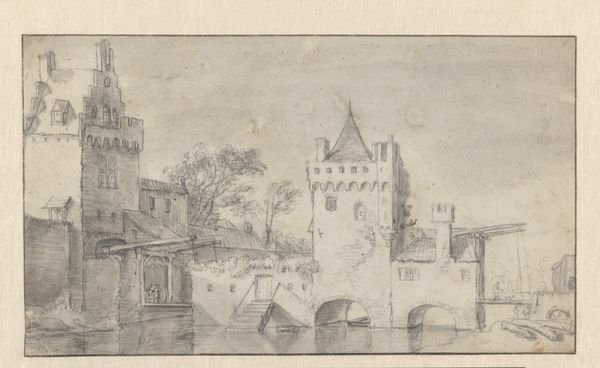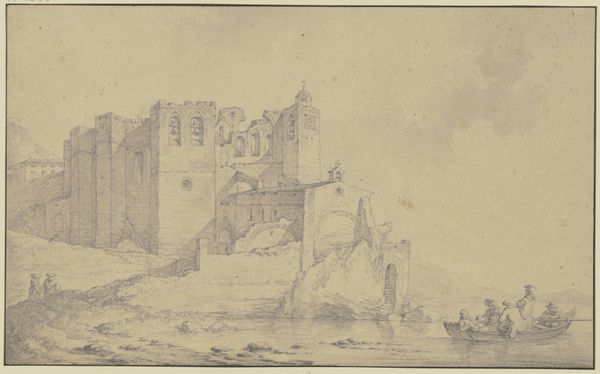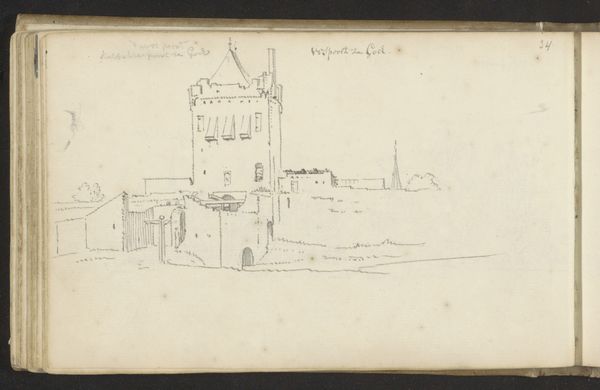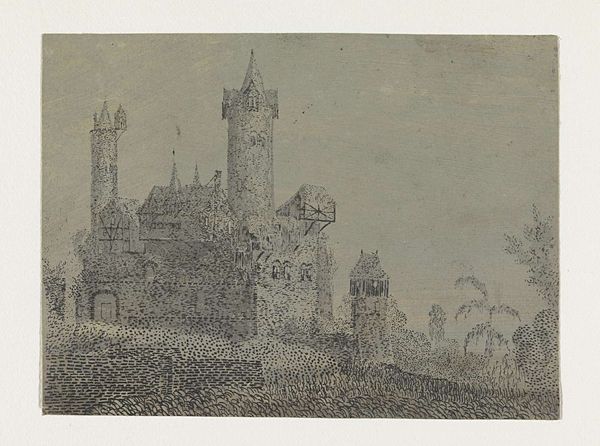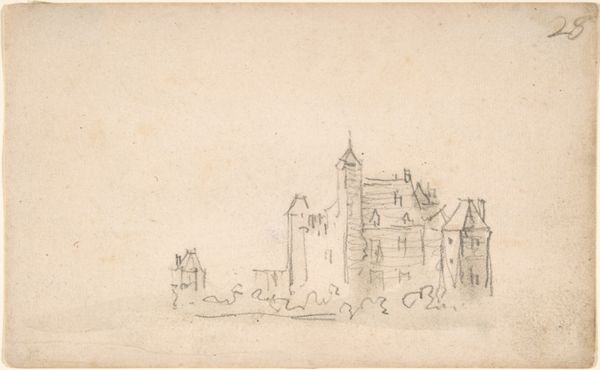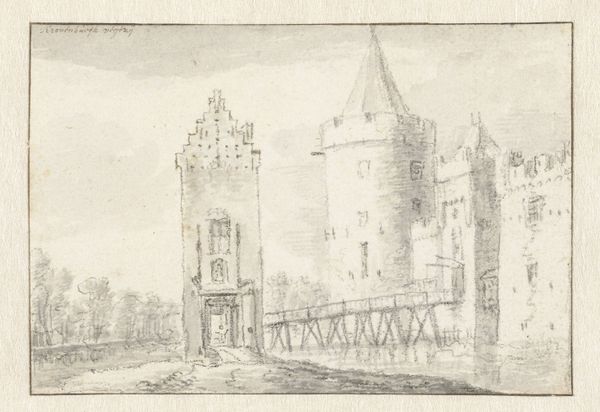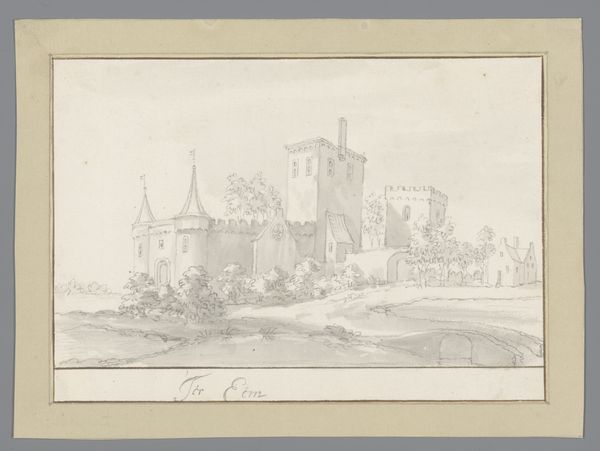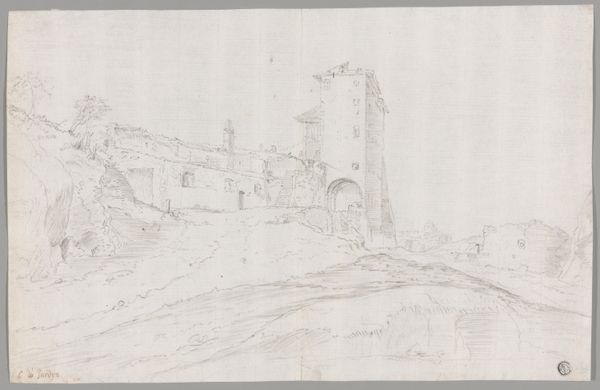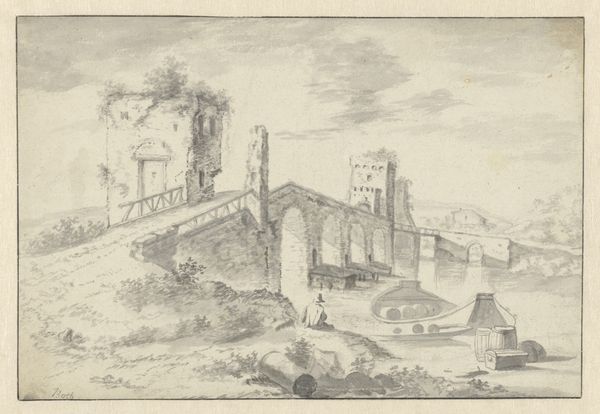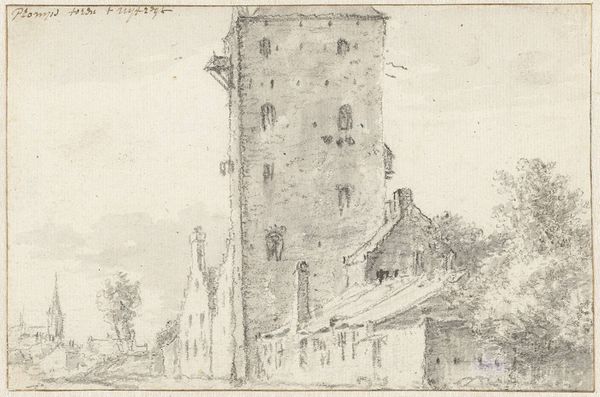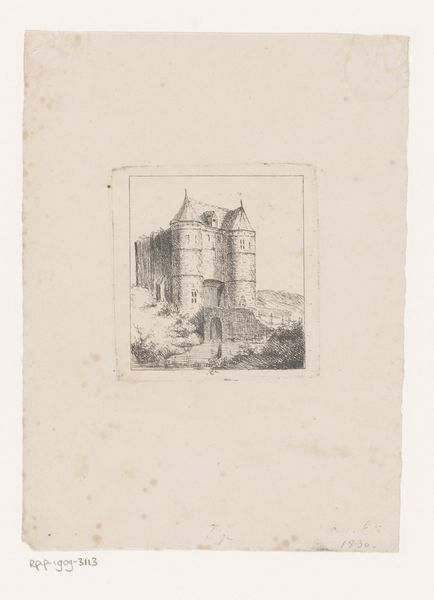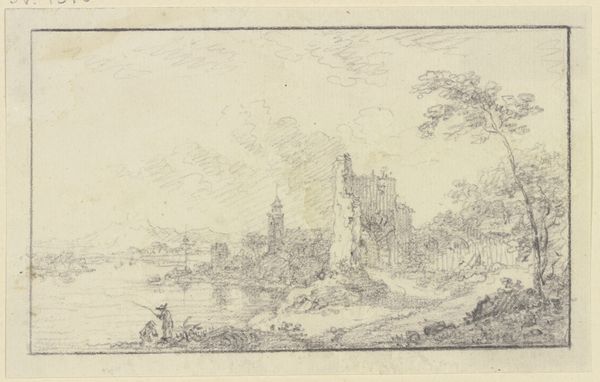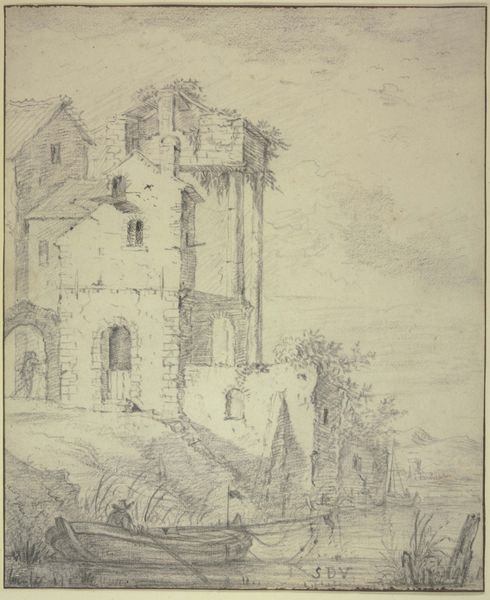
drawing, pencil
#
drawing
#
dutch-golden-age
#
landscape
#
form
#
pencil
#
line
#
cityscape
Dimensions: height 99 mm, width 141 mm
Copyright: Rijks Museum: Open Domain
Salomon van Ruysdael captured the Ruin of Egmond Castle with delicate strokes. These ruins are more than just stones; they speak of time, decay, and the transience of human power. The motif of ruins carries a rich cultural memory. In classical antiquity, ruins symbolized the fall of empires, a reminder of mortality. Here, the ruined castle is reminiscent of the visual allegories of the "memento mori." These artistic compositions depict objects symbolic of the brevity of human life, such as skulls or decaying flowers. Consider, too, the psychological weight of ruins. They evoke a sense of nostalgia, a longing for a past now lost. This yearning is not merely personal but collective, tapping into a shared human experience of loss and the relentless march of time. Ruysdael uses these to invoke a sense of the past’s enduring presence within the present. Ruins remind us that all things return in a cyclical fashion. As emblems, ruins resurface, transformed yet familiar. They remind us that history is neither linear nor finite but a continuous, evolving dialogue between past and present.
Comments
No comments
Be the first to comment and join the conversation on the ultimate creative platform.
